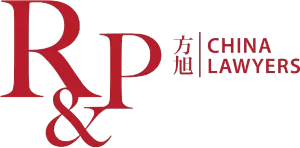-
Introduction
Despite China remaining the sourcing capital of the world, most companies nowadays enter China to sell their products, rather than to source (or produce) them. This is not surprising given China's demographics: for example, it is already the world's largest luxury market as well e-commerce market, and according to one study it could have 630 million middle class consumers by 2022 (McKinsey).
As the landscape is developing so quickly, it is time for a comparison between the different sales channels available to foreign companies today. No doubt, China's e-commerce opportunities are getting the most press but in fact it is not just about e-commerce: the best strategy is made with an understanding of all the opportunities, and based on the model that fits best with your products, your prospective market, and the resources that you want to invest in making your China strategy a success.
We will share with you the (good and bad) experiences of 100+ international retailers and brands that we have assisted to (try to) conquer the Chinese market, providing you with a useful framework for your China entry decision-making process, based on the entry models that we see most.
-
Selling via an import agent or distributor
A classic and low entry-barrier option is cooperating with a Chinese import agent or distributor, who will be responsible for the sale of the products in China. A distributor will buy your products and sell them on the Chinese market on its own account, while an import agent is normally involved when you already have an end-buyer for your products.
These methods are very common when a company intends to distribute the product quickly and inexpensively, albeit ones that have several disadvantages as well.
Choosing the right distributor can be problematic, which some of our clients have learnt the hard way: (i) there is a lot of competition for the best distributors, (ii) most distributors tend to have their own agenda, which means that their interests often do not fully align with yours, (iii) most distributors will want exclusivity in return for access to their China-wide network, will promise huge sales but are unwilling to commit and, in the end, may well under perform. Giving exclusively should always be subject to clear conditions and restrictions (geographic, industry, market segment, minimum sales volumes, term, etc).
The proper structuring of sales, agency and distribution contracts is therefore key, and you must get legal advice before you end up like many before you did: having committed to a non-performing distributor without the option to terminate and either appoint a new distributor, or pursue other sales channels. Other disadvantages to watch for: profit margins of this channel will generally be small, while you will have limited control (if any) over marketing and branding.
-
Cross-border e-commerce or domestic e-commerce
E-commerce has taken China by storm. The statistics speak for themselves; online retail sales in China reached 5.16 trillion yuan ($752 billion) in 2016, representing a 26.2% growth from 2015-more than double the growth rate of overall retail sales according to China's National Bureau of Statistics. When talking about e-commerce in China the first thing that comes to mind is Alibaba. TMall, the B2C platform owned by Alibaba, had a staggering 54.6 % market share in 2016, and was followed by JD.com with 24.7 %.
Taking TMall and JD as examples, we see that they offer two options for retailers and brands: TMall Classic and JD are for companies that are established in China (domestic e-commerce), while Tmall Global and JD International give companies that are set up abroad the option to sell into China (cross-border e-commerce). Setting up a cross-border store seems like an attractive option for foreign companies because they do not need a physical structure in China, however there are several significant downsides and challenges. First, operating a store on a cross-border platform is quite expensive, with yearly operating fees of easily $10,000, a commission on every sale which varies between 3-6 % and a one-time fee of around $25,000. Add to this the fixed and commission fees of service providers who create, design, and operate your store, and margins will be limited. Moreover, cross-border sales only account for a very small percentage of the total China e-commerce market (some estimate around 5%). Finally, when operating from abroad, companies tend to refrain from or do not know how to engage in relevant marketing activities tailored to the Chinese consumer.
Operating a domestic e-commerce channels has many advantages. The main drawback is the requirement to set up a subsidiary in China to enlist with a platform, and sell goods domestically in China. A secondary issue, at least for some categories of products (e.g. cosmetics), is that the goods to be sold must meet local requirements. Overall, and unless certain local restrictions prevent domestic sales in China, most companies now tend to use cross-border e-commerce as a stepping stone, or they skip it altogether and directly focus on domestic e-commerce channels through a newly-established Chinese subsidiary.
- Local China office to manage customers, distributors, franchisers, retailers, and e-commerce
Increasingly, companies decide to set up a China office to manage their sales channels more directly and effectively, while retaining various levels of involvement with and control over marketing, branding, customer data, pricing, distribution, and brand proposition. A China entity offers the opportunity to hire permanent local staff, who can gather local knowledge and share this with headquarters, for a step-by-step development of the optimal sales channels and an overall China strategy. Some companies may still start with growing existing customer and distributor business, while opening new channels with retail, franchise, and e-commerce.
- Brick-and-mortar retail stores
In the long-term, the most profitable channel - but also the costliest to run - seems still to be the brick-and-mortar, physical retail network. Traditionally foreign retailers and brands have often used a franchise model (less control over the marketing, branding, customer base, pricing, and brand proposition) or they set up joint ventures that will invest and help them in the process. But in recent years, many well-known international brands have focused on setting up a 100% Wholly Foreign-Owned Enterprise (WFOE) to open physical stores.
While the downside of this channel is obviously the high investment and operational costs, there are several distinct advantages. First, the profit margins in retail are high (especially if the products are manufactured or sourced in China), as this means saving on transportation, import duties, and taxes. Furthermore, the retailer is in full control of sales, marketing, branding, pricing, brand proposition, and its omni-channel China operations. Moreover, it presents companies with a unique opportunity to understand the Chinese market and its customers, and use this for a long-term approach to become an established brand in China. Some retailers invest heavily in obtaining brand recognition, and a critical mass (G-Star, Under Armour), while others choose strategic, affordable locations, and take time to grow their brand (Victoria's Secret). With its middle class ever growing and a clear appetite for foreign products and brands, China is already a mature sales market that can hardly be ignored by Western retailers and brands.
-
Conclusion
There are plenty of ways to approach the market. Ambitious companies will usually want to combine their own physical store retail network including at least one or more flagship stores, usually combined with at least one major e-commerce channel to allow cross-exposure. More cautious approaches are to find the right distributor that will do the work for you, setting up a local company for domestic e-commerce, or taking an omni-channel approach. For those companies that cannot yet sell into China the cross-border e-commerce model may be the first step, but even then, they are wise to invest in structure, so that they can expand into domestic sales promptly when the time is opportune.
The content of this article is intended to provide a general guide to the subject matter. Specialist advice should be sought about your specific circumstances.


